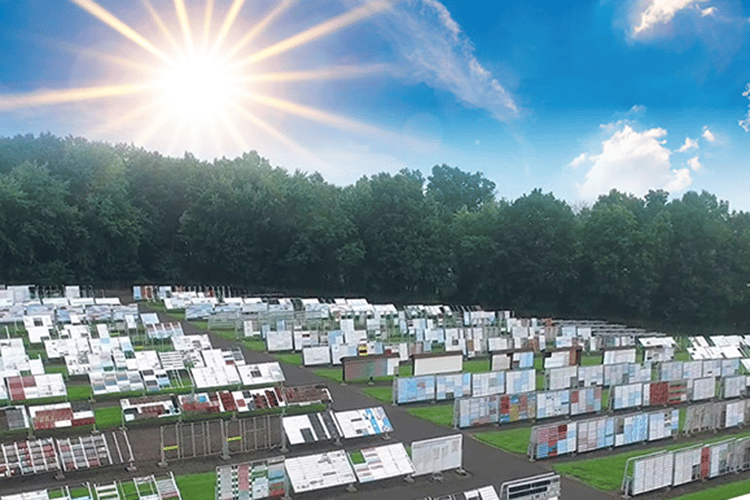By Leo Procopio, Paintology Coatings Research LLC
When asked by those outside the paint and coatings industry what they do for a living, coatings scientists are often tempted to offer some levity and respond with the line, “I watch paint dry.” Of course, on the surface it sounds quite dull, but unbeknownst to the inquisitors, the joke is on them because the drying and curing of coatings is actually a very complex process that has generated decades of intense scientific study.
One can imagine that those inquirers might also think that the only thing more boring than watching paint dry would be watching it weather over time. How wrong they would be! In fact, understanding how coatings hold up to weathering is critically important for the success of the industry.
Many raw material suppliers, coatings manufacturers, and coatings end users have exterior testing programs in place to evaluate the effect of weathering on their products. Such programs are useful throughout the various stages of product development from guiding initial experiments and prototypes to product optimization and commercialization.
In this article, one such program that has been evolving for nearly seven decades is profiled. CoatingsTech had the unique opportunity to visit Dow’s Exposure Station in Spring House, PA, to tour the facility and discuss the science behind weathering paints with John Calderaio, exposure station manager, and Katherine Davis, marketing manager for North America. Both are members of Dow’s Coating Materials business unit. Dow is a leading materials science company and global raw material supplier to the coatings industry.
THE SCIENCE OF PAINT DURABILITY
As long as paints and coatings have been used outdoors, coatings scientists have been trying to find ways to make them last longer. The durability of coatings in the face of environmental stresses is a key property for exterior coatings. Depending on the location and climate in which they are put into service, exterior coatings experience various levels of exposure to destructive elements such as sunlight, water (e.g., rain, ice, condensation, humidity, or immersion), dirt, corrosive salts, changes and extremes in temperature, impact (e.g., from hail), and microbiological attack (e.g., mold, mildew, algae).
In addition to the many environmental factors, there are numerous raw material and formulation design variables that will influence the weatherability of a coating. Resin features such as polymer type, molecular weight, crosslink density, aromatic content, or hydrophobicity will often have a profound effect on their resistance to attack from elements such as ultraviolet (UV) light and water.
For example, bisphenol A-type epoxy resins, with their high levels of aromaticity, will typically lead to very quick chalking and gloss loss outdoors, sometimes in a matter of months, due to photodegradation by UV light. On the other hand, topcoats based on fluoro-polymers such as polyvinylidene fluoride (PVDF) can perform well for decades due to resistance of their carbon-fluorine bonds to photolytic and chemical attack.
Every ingredient in a coating formulation (resin, pigment, additives) may have an effect on weathering performance. Another well-known example is the widely used pigment titanium dioxide (TiO2), which can generate radicals via photocatalysis in the presence of UV light, water, and oxygen. Those free radicals can then attack and degrade the binder, eventually compromising both aesthetic and protective properties of the coating film.
Other ingredients can assist in the fight against the elements. Additives such as UV absorbers or hindered amine light stabilizers (HALS) can be used to combat the effects of photodegradation and the generation of free radicals. Corrosion-inhibiting pigments help a coating resist the deleterious effects of water and salts that will attack an underlying metal substrate.
The vast number of variables that can be manipulated in the design of formulated coatings, along with the many environmental factors facing an exterior coating in service, creates complexity for the product development process. For coatings scientists, this complexity requires the development of deep insight into how the variables affect weatherability, which can be addressed through testing under both accelerated and natural exposure conditions.
Accelerated laboratory weathering is used because, as the term implies, it can speed up the acquisition of relevant data. Natural weathering studies can often take years before meaningful change or failure is observed, so accelerated testing provides a way to advance the product development cycle more quickly. Accelerated test methods do not replicate exactly what a coating experiences in the real world but are designed to provide a standard method for simulating exposure to certain weathering elements.
Some common accelerated weathering methods used in the coatings industry include ASTM D45871 (exposure to fluorescent UV and condensation) and ASTM D66952 (Xenon arc exposure with water spray), both designed to simulate exposure to sunlight and a source of water. These methods are useful for evaluating properties such as gloss and color retention and chalking resistance.
For corrosion resistance, ASTM B1173 (continuous salt spray exposure) is commonly used, while better correlation with real-world exposures is often found with ASTM D58944 (exposure to cycles of salt fog, UV, and condensation) and other cyclic methods that incorporate more than one environmental stressor.
Accelerated testing can provide very useful information for making decisions on product development, but correlation with natural weathering is usually not exact. No accelerated method can accurately reproduce all the environmental stressors that a coating experiences across various climates. Therefore, accelerated methods should not completely supplant exterior exposure testing in product development processes.
When developing new raw materials and coating formulations, exterior exposure testing in a real-world environment is usually a required step to demonstrate performance. If exposure testing is bypassed on the way to commercialization, formulators run the risk of unexpected performance failures in the field.
Calderaio notes that accelerated weathering is extremely useful during the development process to weed out poor performers, but exterior weathering studies are necessary as proof statements for the final products.
